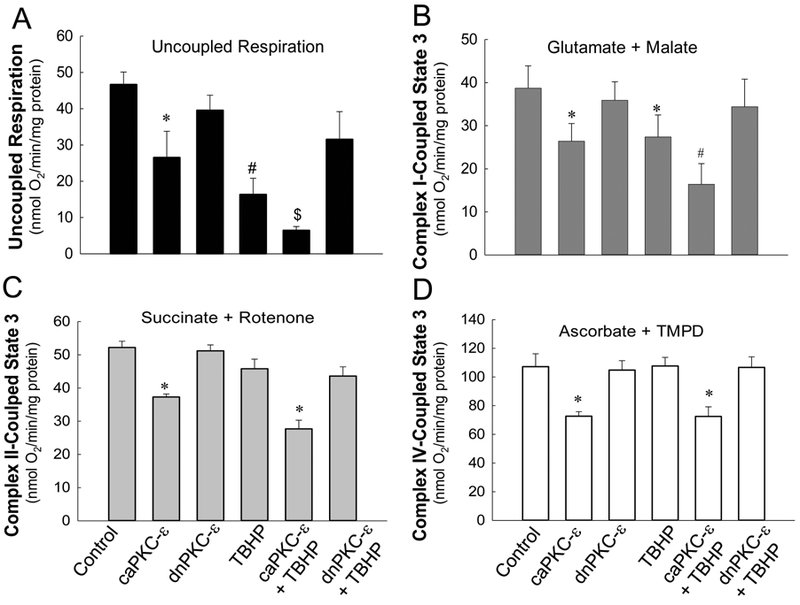Fig. 4.

A. Uncoupled respiration in non-injured and TBHP-injured RPTC expressing the constitutively active (caPKCε) or inactive (dnPKCε) mutants of PKCε. B-D: State 3 respiration coupled to the oxidation of electron donors to complex I (B), complex II (C), and complex IV (D) of the electron transport chain in non-injured and TBHP-injured RPTC expressing the constitutively active (caPKCε) or inactive (dnPKCε) mutants of PKCε. State 3 was measured in digitonin-permeabilized RPTC energized with 5 mM glutamate + 5 mM malate (B), 10 mM succinate + 0.1 μM rotenone (C), and 1 mM ascorbate + 1 mM N,N,N’,N’-tetramethyl-p-phenylenediamine (D) at 4 hours after TBHP (0.35 mM) exposure (45 min). Results are the average ± S.E. of 3–7 independent experiments (RPTC isolations). Values with dissimilar superscripts at a given time point are significantly different (p<0.05) from controls and from each other.
